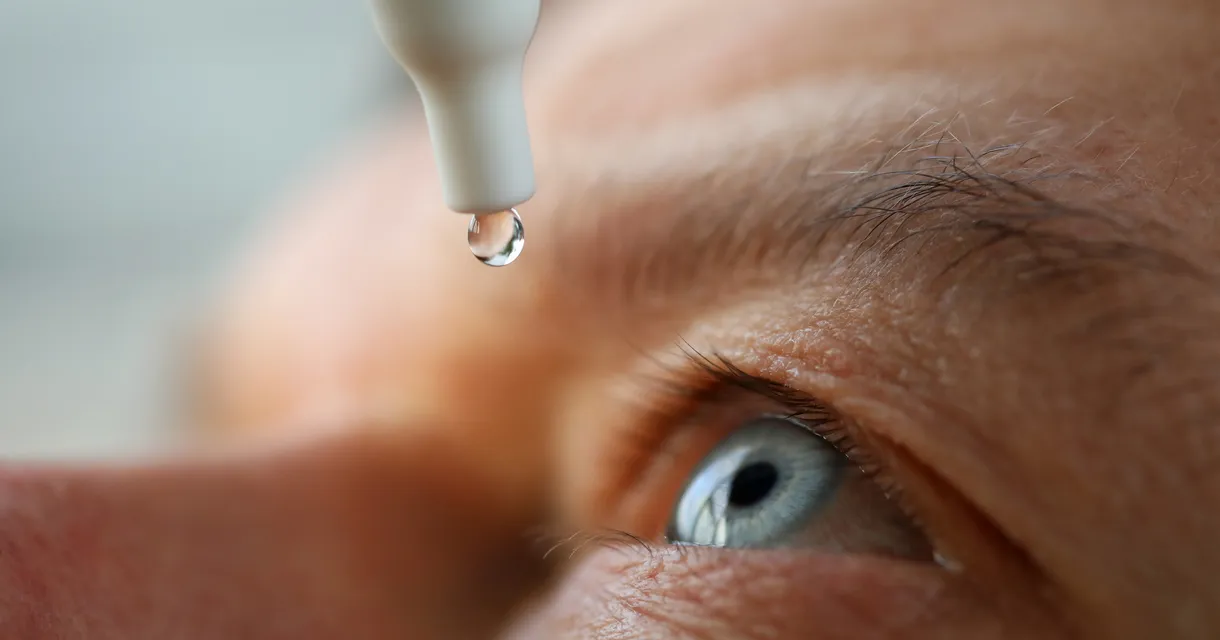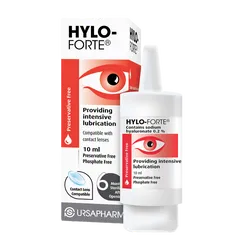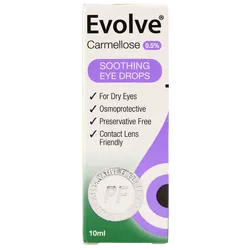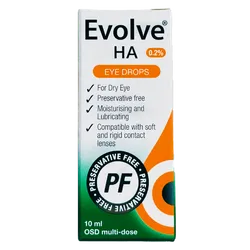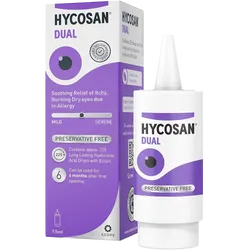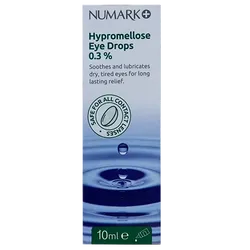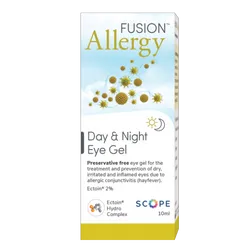Dry eyes can be caused by a number of different factors and can leave you feeling uncomfortable or irritated. Your first thought may be to reach for the eye drops however, choosing the wrong kind could result in a worsening of your symptoms.
Find out what causes dry eyes and which eye drops you should choose in order to treat your dry eye symptoms.
Symptoms of Dry Eyes
Dry eyes can be extremely uncomfortable. Symptoms will depend on the severity of the dryness but the most common symptoms include:
- Itching
- Redness
- Feeling like there is something in your eye
- A gritty feeling
- Blurred vision
- Light sensitivity
Some people may also experience reflex tearing. Reflex tearing occurs when the body attempts to make more tears to provide moisture to the eyes. These tears are mainly made up of water however meaning that they are not able to coat the eye. This results in streaming.
What Causes Dry Eyes?
Our body uses tears to coat the cornea to provide the eyes with moisture and lubrication. The cornea is the clear part of our eye that contains the iris and pupil. When this becomes dry it can result in irritation. This occurs either from insufficient tear production or a lower quality of tears.
There are a variety of biological and environmental factors that could cause this part of your eye to become dry. These factors include:
- Pregnancy
- Hormone replacement therapy (HRT)
- Medication side effects (eye dryness is a common side effect of certain antihistamines and decongestants)
- Contact lenses
- Laser eye surgery (LASIK)
- Eyestrain
- Allergies
- Age (older people tend to experience eye dryness more frequently)
Dry Eyes in Winter
The colder seasons also often also bring with them dry eyes. In winter, high winds are more frequent and lower levels of indoor humidity. Both of these things can be drying to the eyes.
Lower levels of indoor humidity are usually caused by the use of heating. If you can, try to reduce your use of heating if your eyes are becoming dry.
Choosing the Right Eye Drops for Dry Eyes
There are many different eye drop products on the shelves. You may think that eye drops are eye drops but choosing the wrong kind could actually make your symptoms worse.
There are 3 main types of eye drops; artificial tears, allergy drops and anti-redness drops. Which type you should use will depend on the cause of your symptoms.
If you wear contact lenses, you will also need to ensure that the drops you choose are suitable for use with contacts. This information will be displayed on the packaging.
Find out more about the 3 different types of eye drops below.
Artificial Tears
Artificial tear drops are designed to mimic real tears to moisturise the eye. All artificial tears contain lubricants however some may also contain electrolytes to heal the surface of the eye.
For those with particularly dry eyes, artificial tears that contain guar gum may be more suitable as they are more oily. Most artificial tears will also contain preservatives to stop bacteria from growing in the drops to prevent infection.
Artificial tears are the most common type of eye drops used to treat dry eyes.
Optrex Actimist Spray for Dry Eyes 10ml is used to refresh and hydrate dry eyes. They are also safe for use whilst wearing contact lenses. Vizulize Intensive Dry Eye Drops also contain sodium hyaluronate, as well as an isotonic buffered solution to moisturise eyes and provide lasting relief from dryness.
Allergy Drops
Allergy drops such as Otrivine Antistin Eye Drops are designed for those whose dry eye symptoms are caused by allergens such as pollen, pets or dust. Histamines are released by the body when it is defending against allergens. Allergy eye drops contain antihistamines to block the effect of histamines.
Some newer allergy drops now contain mast cell stabilisers. They prevent the body from making histamines in the first place to reduce allergy symptoms.
Anti-redness Drops
Anti-redness drops are also sometimes known as decongestant drops. Drops such as Murine Irritation & Redness Relief Eye Drops contain vasoconstrictors that shrink blood vessels in the eye to reduce redness. Continued use of anti-redness drops can result in irritation however and make redness worse.
They can also result in dependency if used for more than a few days at a time. This means that eyes will become red when the drops are no longer used. This is known as the rebound effect.
Anti-redness drops should not be used to treat dry eyes.
Preservatives vs Without Preservatives
You can buy eye drops both with and without preservatives. Most eye drops that you buy off the shelf will contain preservatives to prevent the growth of bacteria. Some people are sensitive to these preservatives however, which results in further irritation.
Eye drops with preservatives are not recommended for those who suffer from severe eye dryness. They should only be used for mild to moderate cases.
Eye drops without preservatives commonly come in single-dose vials however they can also be purchased in bottle form such as the Optrex Double Action Eye Drops for Dry Eyes or Evolve HA 0.2% Intensive Eye Drops. They also tend to be slightly more expensive than those that contain preservatives.
If you find that your eyes are consistently dry, or you are experiencing severe symptoms, visit your GP.
For mild and moderate cases, speak to one of our in-branch pharmacists for advice on the best dry eye drops for you. You can also browse our entire range of eye care products online.
